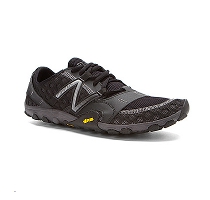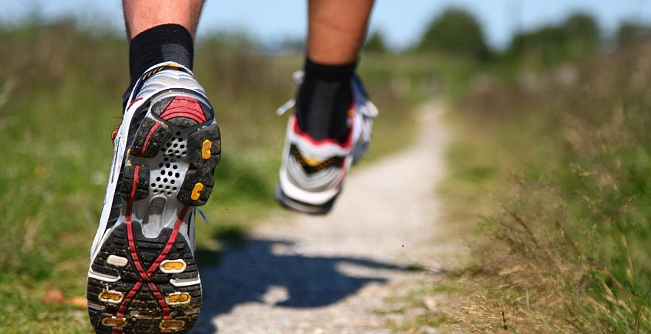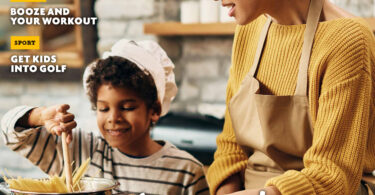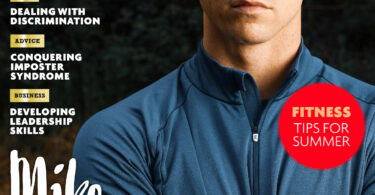Running, it’s cheap, it’s effective and it’s a perfect antidote to the stress of fatherhood. So get running with these handy tips from the FQ Health and Fitness team.
Check your equipment
Bad footwear is one of the main causes of sporting injury so a good pair of running shoes is crucial. They need to be good quality, well fitting and tailored to your weight, feet and specific running needs. For the perfect shoe visit a specialist sports shop, rather than a high-street chain, as they’ll be able to properly assess your requirements. Or perhaps take a look at an online specialist, they are often less expensive than specialist stores and good ones like sportsshoes.com have ooddles of information to help you choose the right shoe.
Think outside of the box too. If you are new to running or starting again after a prolonged period off then perhaps you should start with a more ‘natural’ approach. Minimalist running, running in thin soled low drop shoes, has many benefits including enhancing a natural running style rather than one that is shoe influenced like when wearing a conventional pair of running shoes. If you introduce low profile shoes to your routine from the outset the end result can be a lower risk of injury and a much more comfortable run.
 FQ TESTED: A pair of New Balance Minimus MT10V2 trail running shoes are a perfect choice to start with, especially if you plan to include running through your local parks and woods. With a 4mm drop from heel to toes they are not a hardcore barefoot training shoe so can allow for a gentler introduction to minimalist running. Nor are they an outright trail shoe meaning you can run as happily on the road, path or track as you can over a trail route, perfect for those who want to keep their training interesting and varied. As a massively popular shoe they’re an affordable choice too, and can often be bought on offer from sportshoes.com, making them ideal for those just starting out and wanting to perhaps try a few pairs of different shoes to see which suits them best.
FQ TESTED: A pair of New Balance Minimus MT10V2 trail running shoes are a perfect choice to start with, especially if you plan to include running through your local parks and woods. With a 4mm drop from heel to toes they are not a hardcore barefoot training shoe so can allow for a gentler introduction to minimalist running. Nor are they an outright trail shoe meaning you can run as happily on the road, path or track as you can over a trail route, perfect for those who want to keep their training interesting and varied. As a massively popular shoe they’re an affordable choice too, and can often be bought on offer from sportshoes.com, making them ideal for those just starting out and wanting to perhaps try a few pairs of different shoes to see which suits them best.
Warm up
Slowly increase the temperature of your muscles with gentle stretches and a brisk walk to improve their function and response time. Warm muscles have more elasticity than cold ones so warm up not only improves their performance, it also reduces the chances of you overstretching them and injuring yourself.
| “‘Don’t think, just run’ you never regret going for a run no matter how tired you are or how cosy your bed is. Getting out even for a 20 minute jog to get your legs spinning will make you feel so much better” Ben Tipping – Father, Runner, and Blogger @thefooltweets www.mutteringsofafool.com |
Use your arms
Good co-ordination between legs and arms can propel you forward and help with balance and energy conservation. Don’t hold them too high though or you’ll shorten your stride – instead keep your elbows mid way between your hips and shoulders and increase arm movement when needed to give yourself some extra momentum.
Cool it
A cooling down routine is just as important as a warming up one when you exercise. Jog gently for 5-10 minutes and follow up with a series of leg stretches. Not only will this restore your heartbeat and blood pressure to normal it’ll also help with the elimination of lactic acid – a waste product by the muscles during exercise.
Social running
Find a local running club. The temptation can be to run solo and sometimes it can be a bit daunting to run with a group of people. But don’t worry about what other’s might think of your running style or how quick you may or may not be, most running clubs accept runners of all abilities and will no doubt make you feel comfortable.
| “Find some friends to run with. Having companions to share the blood, sweat and tears makes training so much more enjoyable and satisfies our inner need for human interaction, something often lacking in our digitally dominated World.” Tom Williams – MD at parkrun UK www.parkrun.org.uk |
Re-fuel
What you eat and drink after exercise has a huge impact on how quickly you recover so make sure you down plenty of fluids (stick to water or sports drinks) and stock up on carbohydrate-rich foods to replace your depleted store of glycogen – the stuff your body draws on for energy.




























